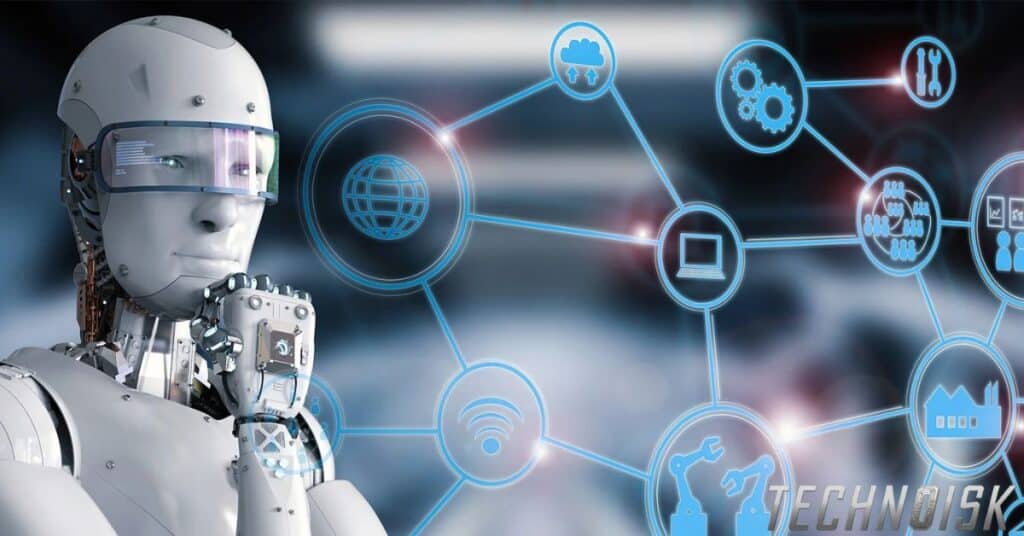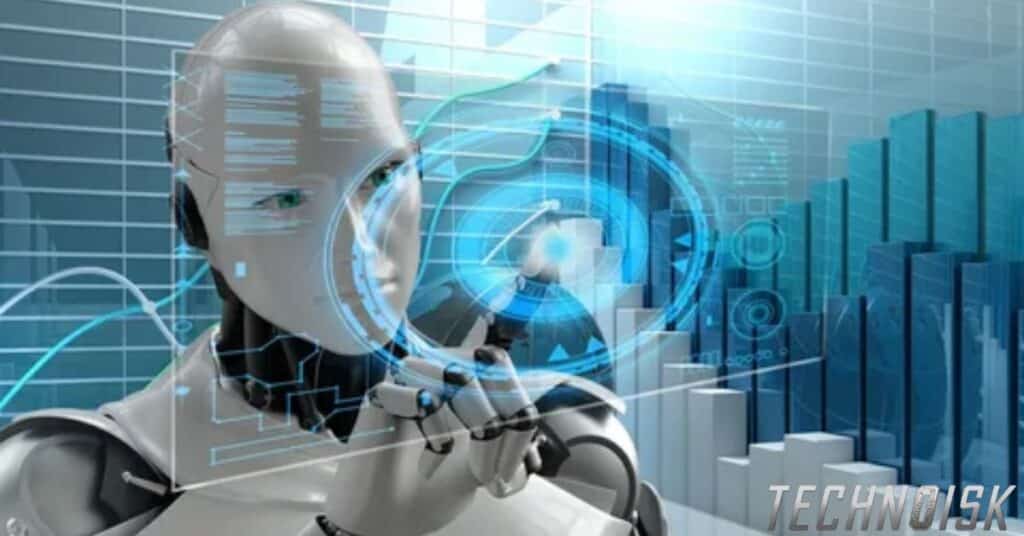AI training is teaching computers to perform tasks by showing them examples. It involves feeding data into algorithms to help them learn patterns and make predictions. Through repetition and feedback, AI systems improve their performance over time.
The AI training is like teaching a brain how to think. It’s about feeding information to machines so they can learn and get smarter. Imagine guiding a child through homework until they master it on their own. That’s AI training in a nutshell—empowering machines to learn and grow independently.
AI training is like coaching a computer to learn from examples. We feed it data and guide it to recognize patterns. With repetition, the computer improves its skills and becomes smarter over time.
Introduction To AI Training

In the realm of artificial intelligence (AI), training serves as the foundation for teaching machines to perform tasks. It’s akin to tutoring a student, where we provide guidance and examples for the computer to learn from. This process involves feeding data into algorithms, enabling them to recognize patterns and make decisions autonomously.
The goal of AI training is to equip machines with the ability to learn and adapt, similar to how humans do. By exposing the computer to vast amounts of data and feedback, we enable it to refine its understanding and improve its performance over time. Through this iterative process, AI systems become increasingly proficient at tasks ranging from image recognition to natural language processing.
The Process Of Teaching Computers AI Training
Teaching computers involves breaking down complex tasks into smaller, manageable steps. We start by defining the task and the desired outcome, providing clear instructions for the computer to follow. Then, we feed the computer examples or data to help it understand how to perform the task.
Next, the computer uses algorithms to analyze the provided data, identifying patterns and relationships. Through a process called machine learning, the computer adjusts its internal parameters to improve its performance based on feedback. This iterative cycle of learning and adjustment continues until the computer achieves the desired level of proficiency in the task at hand.
Read Also This: NippyFile: Revolutionizing Cloud Storage for Easier File Access
Providing Examples For Learning AI Training

In AI training, providing examples is like giving a map to guide computers through unfamiliar terrain. We offer the computer a variety of instances or scenarios to learn from, representing different aspects of the task at hand. These examples help the computer recognize patterns and develop its understanding of how to tackle similar situations in the future.
The exposing the computer to diverse examples, we enable it to generalize its learning and apply knowledge to new situations. This process mirrors how humans learn from experience, gradually building expertise through exposure to different situations and contexts. Ultimately, the quality and diversity of the examples provided greatly influence the effectiveness of the computer’s learning process.
Importance Of Real-World Scenarios
Real-world scenarios provide context for AI training, making learning more relevant and practical. By encountering diverse situations, computers learn to navigate complexities and adapt to dynamic environments. This exposure enables them to apply their skills effectively in real-world applications.
Learning From Varied Examples
Exposure to diverse examples is vital in AI training, enabling computers to grasp the breadth of possible scenarios. By analyzing varied instances, computers learn to generalize patterns and adapt to new situations. This breadth of experience enhances their ability to make accurate predictions and decisions in diverse contexts.
Generalization And Adaptation
In AI training, generalization allows computers to apply knowledge from specific examples to new, similar situations. This ability enables them to adapt and make informed decisions in unfamiliar contexts. Through generalization and adaptation, computers become versatile problem-solvers, capable of tackling a wide range of tasks.
Influence Of Quality In Examples
The quality of examples significantly impacts AI training outcomes, shaping the computer’s understanding and performance. Well-chosen examples provide clear guidance and facilitate effective learning. Conversely, poor-quality examples may lead to confusion or inaccuracies, hindering the computer’s progress.
Read Also This: What Does Ai Say About Death
Recognizing Patterns and Making Predictions AI Training

In AI training, recognizing patterns is akin to connecting the dots in a picture. Computers analyze the provided data to identify recurring structures or sequences, allowing them to discern underlying trends or relationships. This skill is crucial for making accurate predictions about future outcomes based on past observations.
Once patterns are recognized, computers leverage this knowledge to make predictions or decisions. By extrapolating from existing data, they can forecast potential outcomes or infer missing information. This predictive capability is harnessed in various applications, from weather forecasting to stock market analysis, enabling informed decision-making in diverse fields.
Iterative Improvement Through Repetition AI Training
In AI training, iterative improvement is the key to mastery, much like practicing a musical instrument. Computers refine their skills through repeated exposure to data and feedback loops. Each iteration allows them to fine-tune their algorithms and adjust their parameters for better performance.
Repetition reinforces learning, helping computers internalize patterns and concepts over time. As they encounter more examples and receive feedback on their predictions, they gradually improve their accuracy and efficiency. This iterative process mirrors the way humans learn from experience, gradually honing their skills through practice and repetition.
Advancing Skills Over Time AI Training

In AI training, skills evolve much like a student progressing through school grades. Initially, computers start with basic capabilities and limited understanding. However, as they are exposed to more data and undergo training iterations, their skills steadily advance.
Over time, computers become more adept at tasks, demonstrating enhanced problem-solving abilities and decision-making prowess. This continuous improvement is driven by the accumulation of knowledge and experience gained through training. Ultimately, through consistent practice and learning, computers achieve remarkable levels of proficiency in various domains of artificial intelligence.
Initial Skill Development
At the onset of AI training, computers possess rudimentary abilities. They grasp basic concepts and demonstrate limited understanding of tasks. This early stage lays the groundwork for subsequent learning and skill advancement.
Gradual Skill Enhancement
As AI training progresses, computers steadily improve their capabilities over time. With each iteration, they refine their algorithms and expand their understanding of tasks. This incremental growth leads to enhanced problem-solving skills and decision-making proficiency.
Accumulation Of Knowledge
Throughout AI training, computers accumulate vast amounts of data and information. They integrate this knowledge into their algorithms, enriching their understanding of various concepts and patterns. Over time, this accumulated knowledge serves as a foundation for more advanced learning and skill development.
Conclusion
AI training is the process of teaching computers to perform tasks by providing them with examples and feedback. It involves feeding data into algorithms, enabling them to learn patterns and make predictions. Through repetition and refinement, computers improve their performance over time, becoming more proficient at various tasks.
The goal of AI training is to equip computers with the ability to learn from data and adapt to new situations autonomously. This involves exposing them to diverse examples and scenarios to facilitate learning. As computers undergo training iterations, they develop skills and capabilities that enable them to solve complex problems and make decisions in real-world contexts.
Frequently Asked Questions
What is AI training?
AI training is the process of teaching computers to perform tasks by providing them with examples and feedback.
How does AI training work?
AI training involves feeding data into algorithms, enabling them to learn patterns and make predictions through repetition and refinement.
Why is AI training important?
AI training is crucial for equipping computers with the ability to learn from data and adapt to new situations autonomously.
What are the key components of AI training?
The key components of AI training include providing examples, feedback, and diverse data to facilitate learning and skill development.
What are some applications of AI training?
AI training finds applications in various fields such as image recognition, natural language processing, and autonomous driving, among others.

Meet Jonlia, a tech enthusiast with 5 years of industry experience, adding expertise and innovation to our website as its distinguished author.






